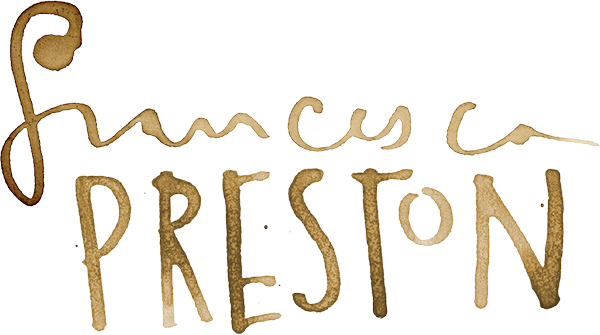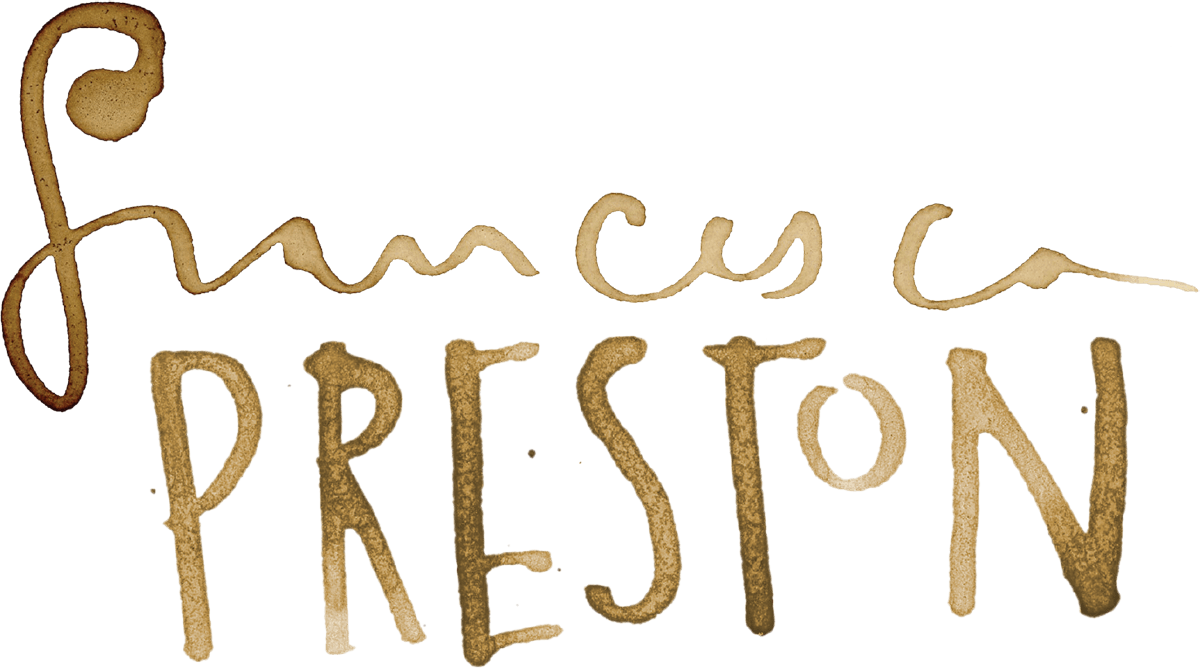Eating and Writing
& a defense of manual labor
Before I learned how to form my letters, I had my mother make them for me. She was my scribe, if you will. I would lie on the ground and draw the most essential things I knew (goose, egg, tin can) and she would write the captions as I spoke them. These translated pictographs would be promptly sent to her mother – my first love-vessel – in the mail. “A beautiful carrot,” my mother writes diligently in quotes, underneath a frenetic, hairy, rather remarkable drawing of a carrot. Because my grandmother lived far away, and because it was wildly important that I get certain messages to her, I realized at a very young age that established symbols were good things. Slowly, I learned to write my name.
Mastering this first word (the caption that will accompany me for the rest of my life) took time, and a very physical effort. This was not a matter of memorization so much as training, struggle; my hand bent like a beak toward an all-mighty line. And in the way that all languages, all scripts, evolve, I can witness in my own ragged archives the evolution of a single letter: lowercase a unfolding out of itself like a hungry snail; the tail of e rising, first cotyledon, from a germinating seed.
Before long it felt like my words had weight, a gravity. I took to writing secret notes and burying them in little holes in the ground, with a few rocks bundled on top, to make a mound. I wasn’t sure who was going to find these notes, but that seemed part of the point; I would never know. My writing always wanted deepness, a burrow, to live in and wait for the right conditions. I was about eight.
*
I remember learning, in school, the word Mesopotamia – a lumpy, oddly ravishing word – which I have since associated with the nebulous beginnings of important things: writing, agriculture, domesticated grains. The cradle, as they say, of civilization. It is obvious that I (and we) owe lovely Mesopotamia a great debt. But what I’m trying to figure out today is the relationship that writing has to the cultivation of things to eat, and why these two labors seem so far apart now. It’s as if they have forgotten they are relatives, and once played together in the mud.
So I’ve done some sleuthing, and I thought you might like to hear what I found. I’ve deduced that we learned to write in the furrows, some time after we learned to tame the seed. It was about 6000 years ago, more or less, and wild wheat had given us the hard kernel of her heart. She was ours. We didn’t have to move around any more, but we did have to save seed, and nurse it from the ground with our bare hands. Animals helped us, whether they liked it or not, and we began to stockpile edible objects.
This abundance made certain demands. It wanted to be recorded. After all, how do you keep track of the bundles of grain you’ve stored away? How do you give a receipt to the messenger who will carry your goods to trade? How do you make an IOU? And so we began to use the implements of farming, and the environment of farming, to teach ourselves to write. We turned, naturally, to the thick mud from the overflowing rivers that sustained us, and we pressed our sticks in the mud as it dried. And then we argued about what the marks meant.
I’m speaking for these people, the Ancient Sumerians, now – I hope they will not take offense. It seems that what they did next was take the impressionable wads of mud and bake them for safe-keeping and travel. These tablets, clay loaves woven with symbol, are our first records of writing.
*
In the years before I was born my parents were just beginning to farm. My mother would become a painter, and my father a baker, but they did not know that yet. I, like a poem, was just an idea. In the photographs from that time, the land (seen over my father’s shoulder, as he maneuvers a small tractor) is bare, and desert-like, and brown. It does not reveal its future fertility, the grapes and olives and staffs of wheat that will rise there, every year, for decades. They are still rising now.
As the family business began to develop, my sister and I were happy to remain on the fringes, dabbling in the dirt between the rows. There are many pictures of us with the palms of our hands displayed confidently to the camera, covered with mud. I told people that when I grew up I would be a worm girl. And this has proven true: I am always trying to go to the origins of things, to the primordial ooze where the first earthworms cavorted. If I could send a letter in a clay envelope I would.
So I am intrigued that today we argue whether gardens and schools, farming and learning, ought to be mixed – that the idea of desegregating them is considered revolutionary. I worry we have forgotten what Walt Whitman once declared, that “the narrowest hinge in my hand puts to scorn all machinery.” I do believe that the fingernails of the first writer were filled with dirt. Writing is like laying out the row for seeds to be planted, and reading is harvesting what someone else has sown. A book is a fruit, an enormous seed packet.
I had an epiphany when I first learned that not all people read and write left to right. Many scripts are written right to left, or top to bottom, and in various ancient cultures, as with the Greek and the Egyptians, writing could travel down the line in one direction, and then wrap back the other way: right to left, left to right, right to left. This was called boustrophedon, which means “as the ox plows.” The words would move back and forth, as an ox moved through the earth that humans were preparing for food.
But several thousand years have gone by, and we are a forward-looking people – compelled, it seems, always in one direction. Most of us do not farm, and many of us barely write. Mistreatment of the soil has hurt both our foods and our words, and we are beginning to realize this. What I sense, now, is a great turning: a change about to happen. It is as if we have reached the end of a line, a certain way of being, and we are preparing to turn around and go back the way we came.


Comments are closed.